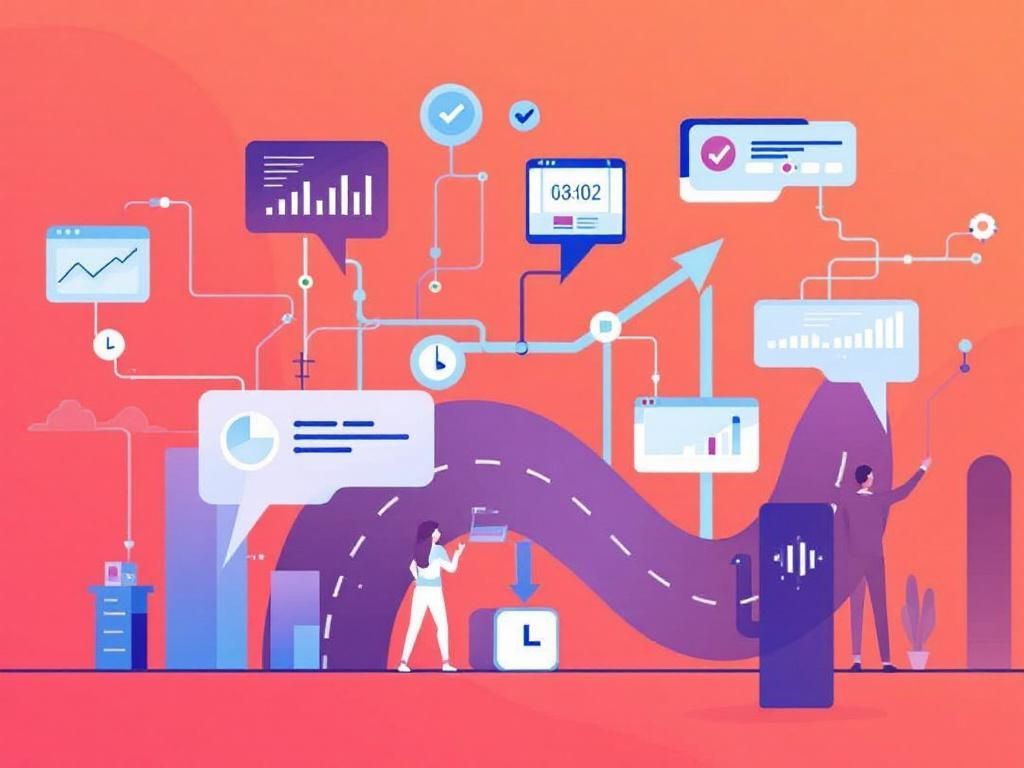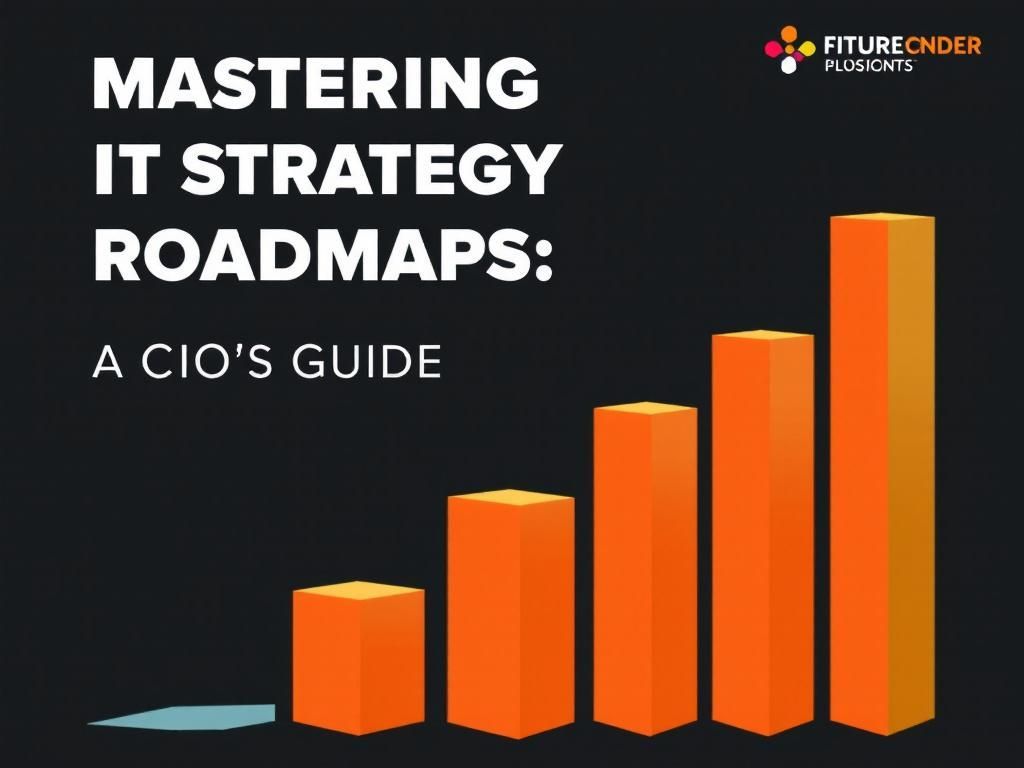Crafting Your 2025 IT Strategy Roadmap
Discover essential steps for CIOs to create a robust IT strategy roadmap for 2025. Align technology with business goals for success.

In the fast-paced world of technology, the role of the Chief Information Officer (CIO) has evolved dramatically over the past few years. As organizations continue to embrace digital transformation, CIOs must not only manage IT infrastructure but also strategically align technology with business objectives. Crafting a comprehensive IT strategy roadmap for 2025 is essential for any CIO aiming to lead their organization into a successful digital future. This article explores the key components of an effective IT strategy roadmap, tailored for the unique challenges and opportunities ahead.
Table of Contents
Understanding the Landscape of IT Strategy
The first step in creating a robust IT strategy roadmap is to understand the current landscape. CIOs must assess both internal and external factors that influence their IT strategy. A thorough analysis includes:
- Market Trends: Staying abreast of emerging technologies such as AI, machine learning, cloud computing, and IoT.
- Organizational Goals: Aligning IT initiatives with the broader objectives of the business.
- Regulatory Environment: Understanding compliance requirements and data protection laws that affect IT operations.
- Competitive Analysis: Evaluating what competitors are doing and identifying areas for differentiation.
Defining Key Objectives for IT Strategy
Once the landscape is understood, it’s essential to define key objectives. Objectives should be SMART: Specific, Measurable, Achievable, Relevant, and Time-bound. Here are some common objectives CIOs might consider:
- Enhance cybersecurity measures to protect sensitive data.
- Improve IT infrastructure resilience through cloud adoption.
- Increase operational efficiency through automation.
- Foster innovation by investing in emerging technologies.
- Enhance customer experience through digital tools.
Setting Priorities
With a clear set of objectives, the next step is to prioritize initiatives based on several factors:
| Factor | Importance | Impact |
|---|---|---|
| Cost | Low / Medium / High | Long-term / Short-term |
| Time to Implement | Immediate / Medium-term / Long-term | High / Low |
| Risk | Low / Medium / High | Reputation / Financial |
Developing the Strategy Framework
Creating a strategy framework entails outlining the approach to each objective, including specific projects and initiatives. This framework should encompass:
Governance Structure
A well-defined governance structure ensures accountability and clear decision-making. This includes:
- IT steering committees
- Project management offices
- Regular performance assessments
Resource Allocation
Properly allocating resources is crucial for the success of any IT strategy. Consider:
- Budgeting for hardware and software investments.
- Investing in employee training and development.
- Hiring for key roles in IT departments.
Leveraging Technology Trends
The technology landscape is constantly changing, and CIOs must leverage current trends to remain competitive. Some key trends to incorporate into your strategy include:
Artificial Intelligence and Machine Learning
AI and ML are revolutionizing industries by enabling automation and data-driven decision-making. Consider initiatives that integrate AI tools to enhance operational efficiency.
Cloud Computing
Cloud solutions offer scalability and flexibility. Transitioning to a hybrid or multi-cloud strategy can significantly improve service delivery and resource management.
Cybersecurity Innovations
As cyber threats evolve, investing in advanced cybersecurity measures is non-negotiable. Explore:
- Zero Trust architectures
- AI-driven threat detection
- Employee cybersecurity training programs
Measuring Success
Establishing metrics to measure the success of your IT strategy is vital. Metrics could include:
- Operational efficiency improvements (cost savings, time reductions)
- User satisfaction ratings
- Security incident response times
Benchmarking
Regular benchmarking against industry standards helps gauge performance and identify areas for improvement. Consider conducting:
- Annual IT assessments
- Peer reviews
- Surveys for stakeholder feedback
Future-Proofing Your IT Strategy
The rapid pace of technological advancements means that CIOs must remain adaptable. Future-proofing your IT strategy involves:
- Continuous learning and adaptation to new technologies.
- Building a culture of innovation within the IT department.
- Establishing partnerships with technology vendors and startups.
Cultivating an Agile IT Environment
Agility is key in responding to market changes and technological advancements. Adopting agile methodologies in IT projects enables:
- Faster delivery of IT solutions
- Enhanced stakeholder collaboration
- Improved flexibility to pivot when necessary
Conclusion
As we look toward 2025, CIOs face unique challenges and opportunities in crafting their IT strategy roadmap. By understanding the current landscape, defining clear objectives, and leveraging technology trends, CIOs can position their organizations for success. Moreover, an emphasis on measuring success and future-proofing strategies will ensure that IT remains a valuable asset in driving business growth. Building a strong foundation now will enable organizations to thrive in the ever-evolving digital landscape.
FAQ
What is an IT strategy roadmap?
An IT strategy roadmap is a strategic plan that outlines how an organization will utilize technology to achieve its business goals over a specified time frame.
Why is it important for CIOs to have a 2025 IT strategy roadmap?
Having a 2025 IT strategy roadmap is crucial for CIOs to align technology initiatives with business objectives, anticipate future trends, and ensure effective resource allocation.
What key elements should be included in a 2025 IT strategy roadmap?
A 2025 IT strategy roadmap should include technology goals, budget considerations, risk management strategies, workforce training plans, and metrics for measuring success.
How can CIOs ensure stakeholder buy-in for their IT strategy roadmap?
CIOs can ensure stakeholder buy-in by involving key stakeholders in the planning process, clearly communicating the roadmap’s benefits, and demonstrating how it aligns with overall business goals.
What trends should CIOs consider when crafting their 2025 IT strategy?
CIOs should consider trends such as cloud computing, artificial intelligence, cybersecurity enhancements, remote work technologies, and data analytics when crafting their 2025 IT strategy.
How often should CIOs revisit and update their IT strategy roadmap?
CIOs should revisit and update their IT strategy roadmap at least annually or whenever significant changes occur in technology, business priorities, or market conditions.






